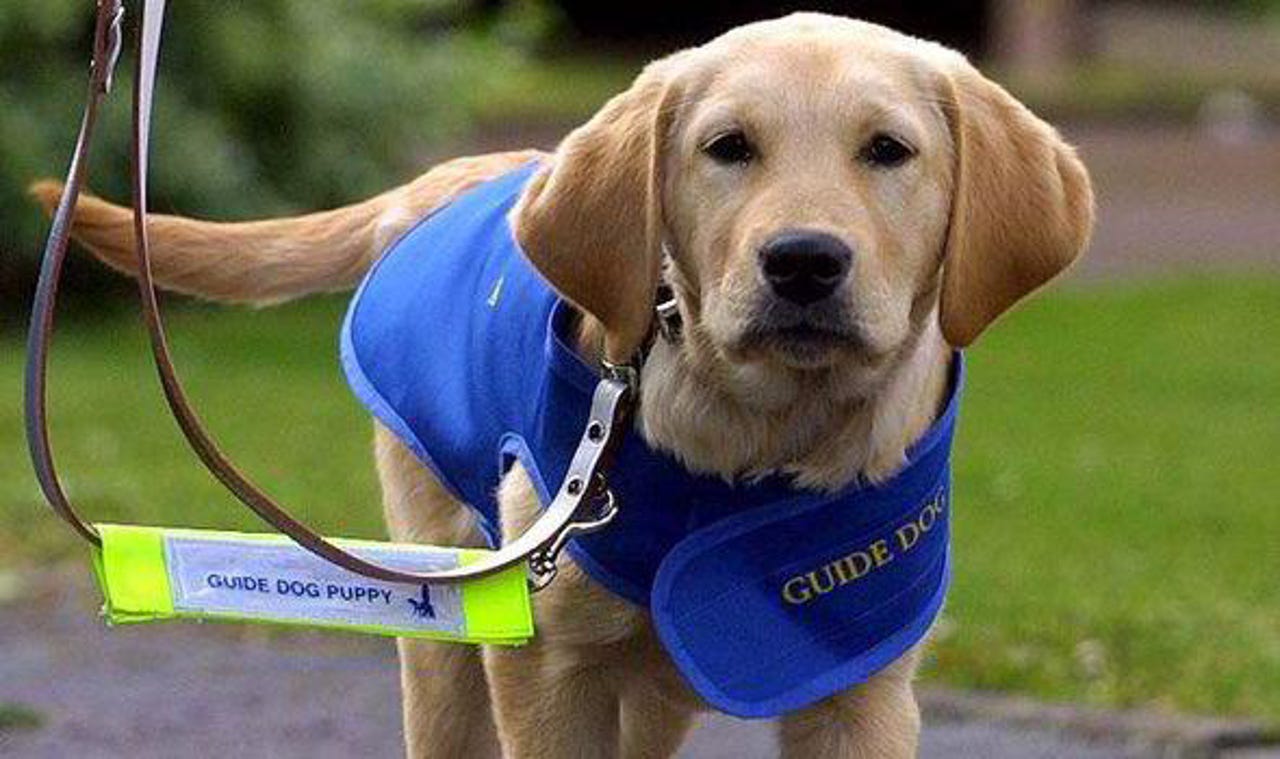How will guide dogs react to service robots?


We once had a dog that went berserk every time a drone was in hearing distance. At first it wasn't such a big problem. Drones were rare and it was easy enough to extricate Fido from the situation. Fast forward a couple years and the ubiquity of drones became a real issue as we took our furry dude on walks, to the beach, or hiking.
That's just one example of the unintended and largely unforeseen inconveniences brought about by wide public adoption of new technologies. As autonomous mobile service robots march, roll, and fly into public view, we're bound to see lots of growing pangs like that. And for reasons I have newfound insight into, one group that's understandably concerned is the guide dog community.
At least according to the preliminary results of a study conducted by the nonprofit Guide Dogs and Starship Technologies, an autonomous mobile delivery service provider, those who rely on service dogs can breathe easy.
For the study, working guide dogs and their owners met Starship's delivery robots in real life scenarios. During the simulation, the robots approached the dogs from the front and rear, overtook the dogs from behind, and were overtaken by the dogs and their owners. The dogs also met the robots head on while crossing a road.
In a sign my sample size may not have been large enough to draw broad conclusions about dogs and unmanned vehicles, all of the dogs in the study reacted calmly. The results are not altogether unexpected. According to Starship's internal data, the company's robots have interacted with over 600,000 non-working dogs in the course of deliveries and field tests, with similar reactions.
"We believe that autonomous delivery can play an important role in supporting all individuals within communities by making people's lives more convenient, including the visually impaired," says Lex Bayer, CEO of Starship. "Working seamlessly alongside residents is a top priority for us, and we are continually looking at ways to enhance our services by engaging with organisations such as Guide Dogs to do just this".
The pace of robotics development has been blistering, in some cases outpacing compliance and regulatory efforts. There's speculation in the industry that rapid adoption of autonomous mobile robots is creating some dangerous situations that will only come to light through unfortunate and preventable accidents.
So it's nice to see Starship taking a lead in testing how its technology will impact one oft-overlooked community. The company plans to continue testing the impact of robots on people with a wide range of visual impairments.